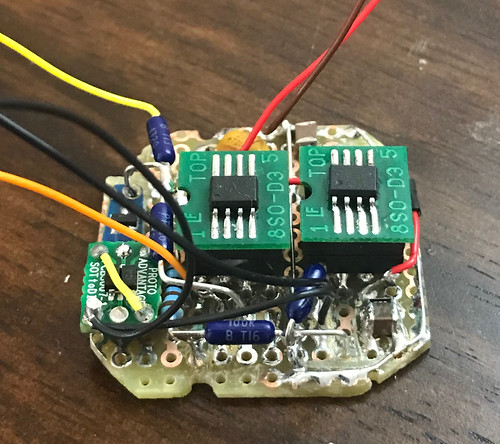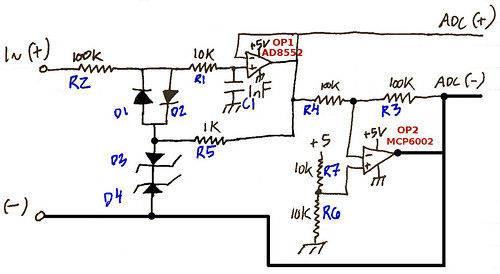Hey friends,
I've had some time to return to this project. The circuit was put together with a value of 1K for R5, BAV199 diodes, 3.3V Zeners, and MCP6002. Performance is quite good and I'm pleased.


I did some interesting experiments over the weekend involving temperature coefficient. I've always read about temperature coefficient of passives, and I became curious about what that looks like in the real world. So an experiment was done.
A battery (AA) was used to provide a stable input voltage. The output voltage was measured with a 6.5 digit voltmeter (SDM3065). To test, a straw was used, air from mouth blown over individual components, one at a time, response in output voltage noted, and how long it took to recover to the initial voltage. All resistors are from the same manufacturer, and same series.
Schematic as reference:

1. D1+D2(Single package): output dropped by
3 milliVolts. Took
5 minutes to recover to initial value.
2. R2: output voltage only dropped
6 microVolts, and recovered to initial value in
20 seconds.
3. R1: output voltage dropped
3 milliVolts, took
2 minutes to recover.
4. D3,D4: Output dropped by
8 milliVolts, took
5 minutes to recover
5. R4: Output dropped by
30 milliVolts, took
3 minutes to recover
6. R3: Output dropped by
50 milliVolts, took
3 minutes to recover
7. R7:Output dropped
20 milliVolts, took
5 minutes to recover
8. OP1 (8552): Output dropped
4 milliVolts,
4 minutes to recover
9. OP2(MCP6002): Output dropped
3 milliVolts, took
3 minutes to recover
Next step is to put this together with the ADC